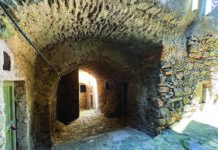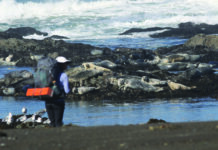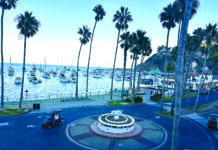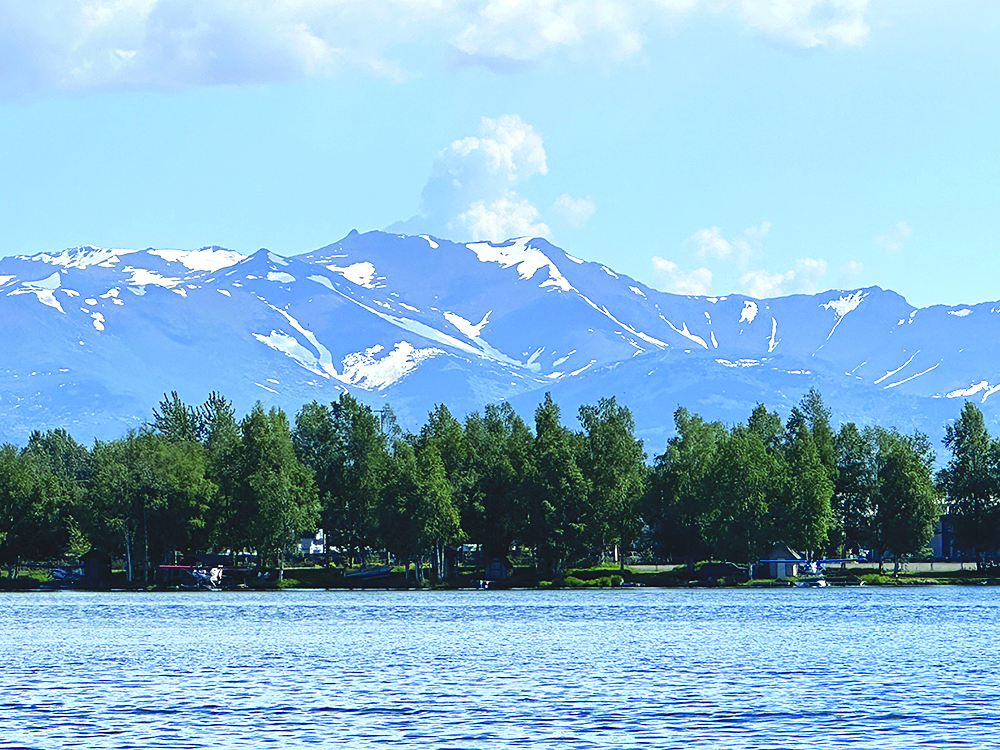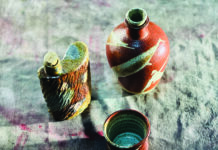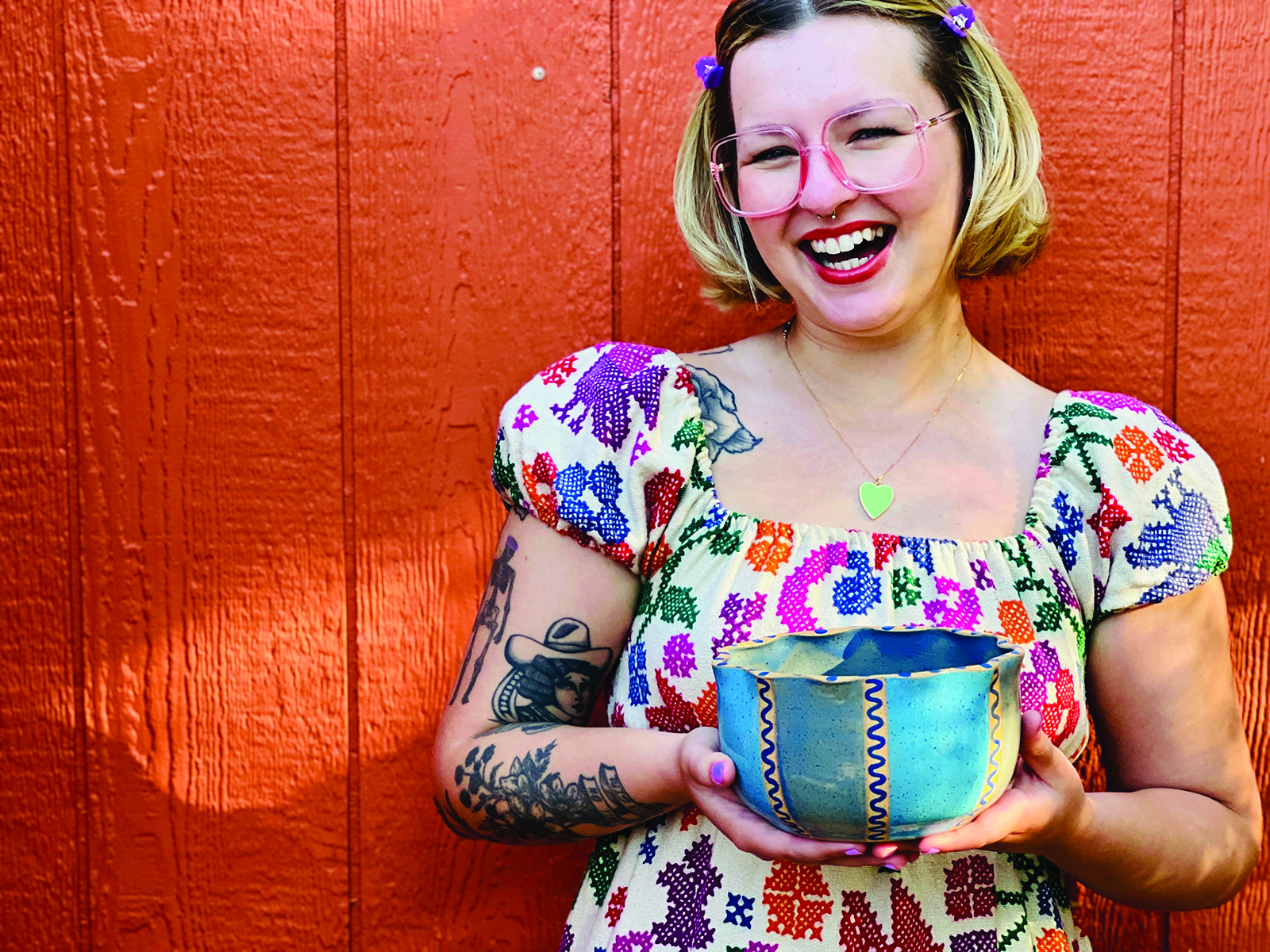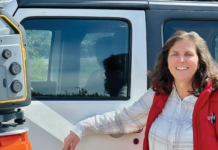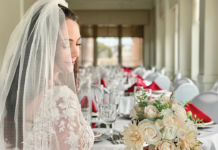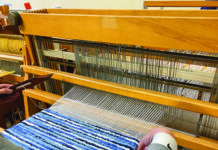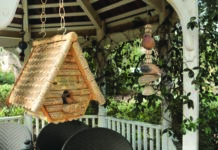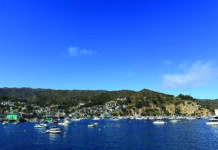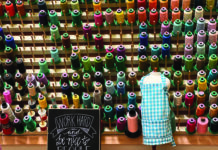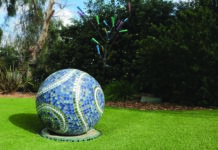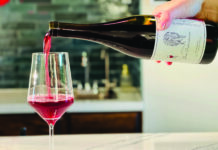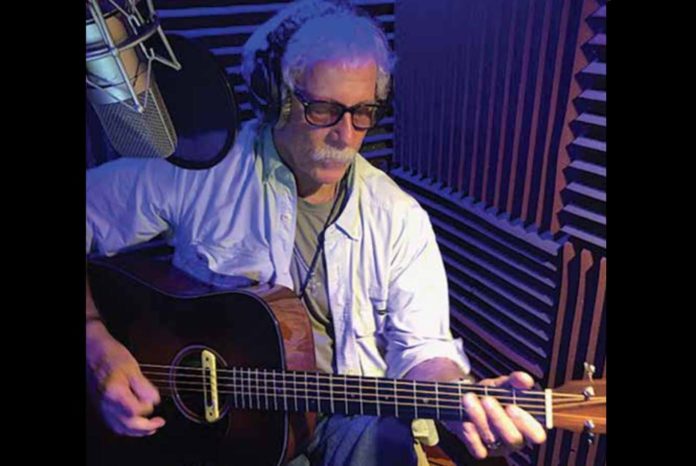By Nancy D. Lackey Shaffer
Talking with Byrds co-founder, country rock legend and musician
extraordinaire Chris Hillman.
Chris Hillman is a legend in his own time. The singer, songwriter and multi-instrumentalist — a master of guitar, bass and mandolin — has spent more than 60 years in the business, paving the way for other musicians along the way. As a co-founder of the Byrds, he helped develop the distinctly Southern California sound that would become known as folk rock. The sound deepened, evolved and refined through subsequent groups like the Flying Burrito Brothers (co-founded with Gram Parsons) and the Desert Rose Band (with Herb Pedersen and John Jorgenson). His influence can be clearly seen in the music of bands such as the Eagles and Tom Petty and the Heartbreakers, although groups such as the Bangles and R.E.M. bear some folk rock marks as well. A native of San Diego County and a Ventura resident for over 40 years, Hillman has continued to write, play and record music, and most recently (in November 2020) released a critically acclaimed autobiography.
Hillman answered some questions for Ventana Monthly between wrapping up a weekend of live performances in Thousand Oaks and preparing for a tour that will take him to Louisiana and Texas in November. The ever-thoughtful musician discussed his earliest influences, creating the unique sound of the Byrds, his relationship with the late, great Tom Petty, living through the Thomas Fire and more.
When I think of the music of the 1950s, I think of Elvis and Chuck Berry.
But you were drawn more to the country side of things. What was it about country and folk music that spoke to you?
Initially I was totally immersed in early rock and roll. From Joe Turner and T-Bone Walker to Chuck Berry, Little Richard and Elvis Presley. I was drawn to other forms of music as well. Our family lived in North San Diego County when I was growing up, and I always loved watching the live country music shows out of Los Angeles on Saturday nights: Town Hall Party, Spade Cooley Show, Cal’s Corral. It was honest music and it opened a part of the culture many of us weren’t aware of.
Who were some of your favorite bands and musicians when you first started getting into music?
When I first started learning to play, I listened to folk artists Pete Seeger, Lead Belly and the Weavers. And later, bluegrass musicians Bill Monroe, Flatt and Scruggs and the Stanley Brothers.
Did other members of your family play music?
No one else in my immediate family took an active role in playing music. But my great grandfather Charles Charlton did play in the Los Angeles Shriner Band.
How old were you when you got first guitar? At what point did you start exploring other instruments, like the mandolin?
I bought my first guitar at the age of 15, and at age 16 the mandolin entered my life, after hearing a record by Mike Seeger.
You were one among several Southern California musicians that would go on to become legends — Bernie Leadon, David Crosby, Gram Parsons, Jackson Browne, just to name a few. What was it like for a young musician at that time? What do you think was going on in the area that was so inspirational for so many of these musicians?
It was a relatively new business, the record business. You had to have some talent to get into the front door, and of course to know someone that would have contacts within the companies or recording studios or the folk clubs. I always considered myself very lucky and very blessed to have been able to work with such fine artists. It was a very creative time, in a relatively small area of Southern California. I don’t know what was the catalyst, but it was a different era.
The Byrds are widely recognized as pioneers of the folk rock genre. Did the band start out trying to create an original sound? How did the sound we think of today as country rock or folk rock evolve?
Roger McGuinn, Gene Clark and David Crosby came out of a folk music background. Michael Clarke came out of a rock background. And I came out of a traditional bluegrass background. The Byrds created a purely unique sound based on our individual musical backgrounds.
The term “country rock” is really what a journalist coined in 1965 when the Byrds recorded Porter Wagoners’ “Satisfied Mind,” on our second album, Turn! Turn! Turn! There is more emphasis on the back beat, similar to what Buck Owens did with the Buckaroos. Then Ricky Nelson, with all of his great records. We continued in the Byrds with our album Younger Than Yesterday and later Sweetheart of the Rodeo.
You’ve been a part of so many influential bands: The Byrds, The Flying Burrito Brothers, The Desert Rose Band. What were you seeking with all of these different projects?
I loved being a part of all of these fine bands. I was never
seeking anything but musical fulfillment.
Through the decades you’ve worked with some huge names (some again and again). Who among them stands out to you today?
I loved working with Dwight Yoakam, Stephen Stills, Marty Stuart, Roger McGuinn and, of course, Tom Petty.
What brought you to Ventura?
My wife, Connie, and I moved to Ventura in 1980, to get away from Los Angeles, but to still have the ability to drive down there for business. Having grown up so near the coast in San Diego County, Ventura reminded us much of those early days. It seemed like the right thing to do, and back then it was so beautiful. Not a lot of people, and not a place where we would expect an urban sprawl.
Your last solo album, 2017’s Bidin’ My Time, was produced by the late Tom Petty, who frequently discussed the influence the Byrds had on his musical development. What was your relationship like? I loved Tom. H
I loved Tom. He was a truly fantastic artist and a sweet soul. We became very close while working on the Bidin’ My Time album. He was one of the most humble men that I have ever encountered, who occupied such an important place our culture.
2017 was an enormous year for you. Shortly after Bidin’ My Time came out, Petty died on Oct. 2. And then a few months after that the Thomas Fire did significant damage to your home. How did you weather such an emotionally tumultuous time?
I think that my trust in God was what gave me the strength to get through all of the difficult things that took place at the end of 2017.
When Tom passed away, we were on the road promoting the album and had planned to be back in Los Angeles the following week, where he and the Heartbreakers were set to sit in with us at the Troubadour. I was ready to end the tour when I was told of Tom’s passing. But Roger McGuinn called me at my hotel in Nashville, and told me not to cancel, but to continue the shows, and “celebrate Tom’s legacy.”
Two months later came the Thomas Fire, which as we all know was a tragedy for so many people, including many of my close neighbors. We nearly lost our home, if not for the amazing firefighters of Ventura County’s Station 41. As they drove up our hill, our neighbors’ home exploded, with their balcony crashing into our home, and igniting the kitchen. The city generators were not activated, and therefore the hydrants were useless. Despite that, the firefighters broke down our front doors and extinguished the fire with whatever was left on their engine.
As with many people who were displaced by the fire, we moved to a rented home for about 10 months, until the reconstruction was finished.
Playing music was the last thing that I would be thinking of doing, until Roger McGuinn phoned me with the idea to go out on tour with Marty Stuart and His Fabulous Superlatives, to celebrate the 50th anniversary of the Sweetheart of the Rodeo tour.
So out of something bad, good things sometimes come.
John Jorgenson, a former member of the Desert Rose Band, also lives in Ventura, and ended up putting you and your wife up when you first evacuated. How long have the two of you known each other?
I’ve known John since 1984. He is not only an incredible musician but also a dear friend. I really couldn’t perform without John, and Herb Pedersen up there with me on stage. I have been working with them off and on since 1985. John is what I refer to as a “giving musician,” meaning he is supportive of anyone he plays with at whatever level they can play. He never holds his amazing talent above anyone. He is a humble, gentle man.
Are there a lot of people from the earlier decades of your career that you’re still close to?
Yes, I’m still very close to Roger McGuinn, Bernie Leadon, Al Perkins and, of course, Herb and John.
You recently published your wonderful autobiography, Time Between: My Life as a Byrd, Burrito Brother, and Beyond. What inspired you to write a book?
Just felt like the time was right to lay it out. There were so many inaccurate accounts with respect to the Byrds and especially the Flying Burrito Brothers that I wanted to relay that history as told by the person who was actually there.
I started sketching out the book in 2013, and it sat on my shelf for at least four years. My plan was to write it for my children.
In 2017, I was approached by Scott Bomar, the publisher of BMG Books. He had read an interview where I spoke about it, and after a meeting, we agreed on a publishing deal. And then I started to rework the manuscript with the help of my wife, Connie, and Scott.
We took a good amount of time researching the dates, and wanted to be accurate. Also, sourcing and licensing a number of photographs to give the reader a real sense of what is going on in the text of the book.
What thoughts and emotions rose up as you were looking back over your life?
When I actually received a physical copy of the first edition, it was great to see it all come together after so many years in the process of writing. The memories all stand out, but those remain mine to hold. I think if one buys the book, reads the book, enjoys the book, they will come to their own conclusions.
I understand that the audiobook of Time Between will be out soon.
Yes, the audiobook will come out on Nov. 19, published by Penguin Random House Audiobooks, and the paperback version will be out on the same day, from BMG Books.
I recorded the audiobook over the summer at Castaway 7 Studios here in Ventura with recording engineer J.P. Hesser, who was great to work with. The director was Scott Sherratt, who was in New York on a Zoom feed, and we would record for about four or five hours each day. In the audiobook, each chapter begins with a short eight-bar guitar/mandolin intro to the chapter. Dwight Yoakam graciously narrated his beautiful forward. It’s going to be a whole new experience for the listener.
How have your musicianship and interests changed over your career?
In the last 10 years, I find myself getting more involved with acoustic music. I don’t even own an electric guitar at this point. The last time I was able to plug in and play bass was on the Sweetheart of the Rodeo tour in 2018.
Your autobiography came out in November 2020, so clearly part of the COVID-19 shutdown was spent getting that project to completion. What else did you do with yourself during the pandemic?
Oh, lots of good things. Actually, I enjoyed not traveling on the road. We have had to continually reschedule concerts that were booked for the fall of 2020. Unfortunately, a few of the performing arts centers have closed forever, which is a very sad result of the shutdown.
I spent the beginning of 2020 with the final editing of my book before it went into the first printing. I was fortunate to be able to do all of the interviews for the promotion of the book via Zoom, Skype or telephone, so there was no need to travel down to Los Angeles, as would have happened prior to the lockdown.
Things haven’t gone quite back to normal, but they’ve opened up significantly from where we were a year ago. What have you enjoyed the most?
What I’ve enjoyed the most is being home, and spending time with my family.
You just played two engagements (“Time Between: An Evening of Stories and Songs”) at the Bank of America Performing Arts Center with Herb Pedersen and John Jorgenson, and will be kicking off a tour soon. How long will you be on the road?
I really loved playing at the Scherr Theatre [at the Bank of America Performing Arts Center], it is a great venue and everyone was extremely professional and supportive. It was the perfect place to play after the two-year drought.
I have a few shows in November. The remaining dates from the fall of 2020 are now scheduled for the spring of 2022.
You’ve been in the music business for more than 60 years and you’ve shown no sign of slowing down. What’s next for the great Chris Hillman?
I’m currently finishing the final work on a book that is a collaborative effort with some of my former band mates. Over the winter, I will begin writing my second book.
Anything else you’d like to share with our readers?
Stay strong and healthy, stay positive and keep a strong faith in God.
Find tour dates, music, photos and more at chrishillman.com.



